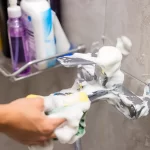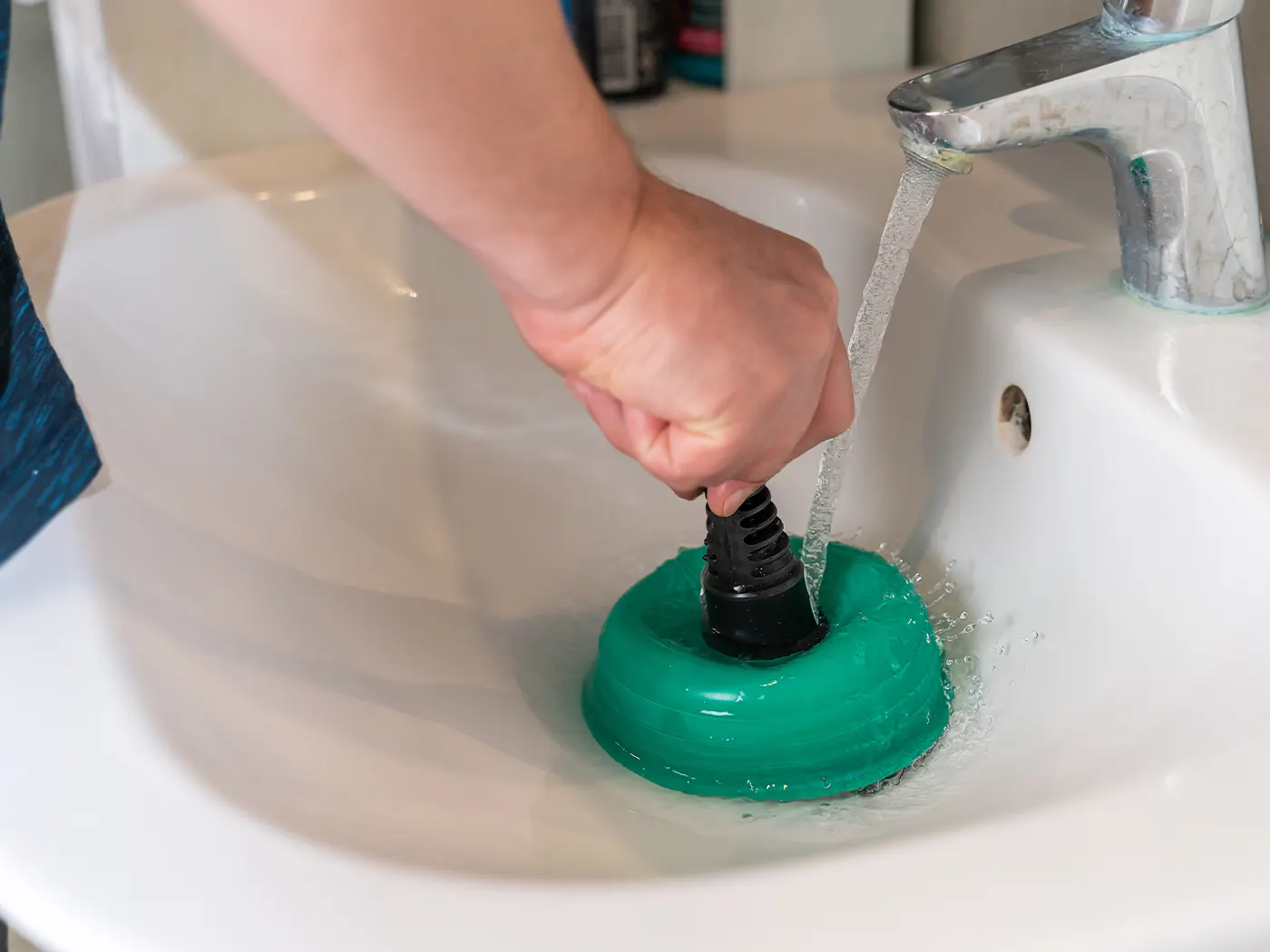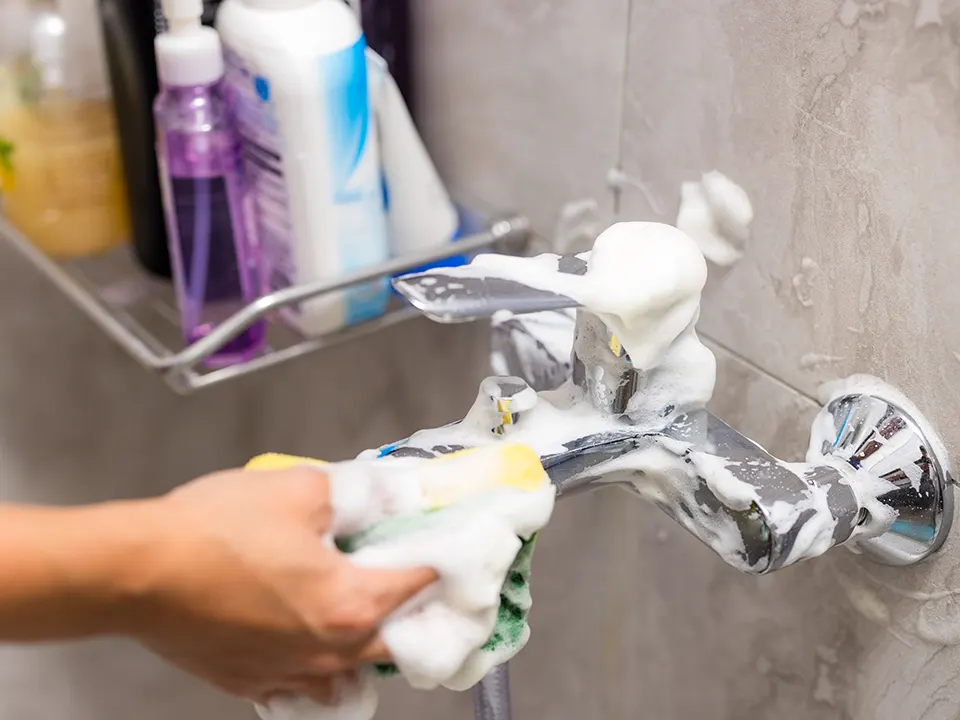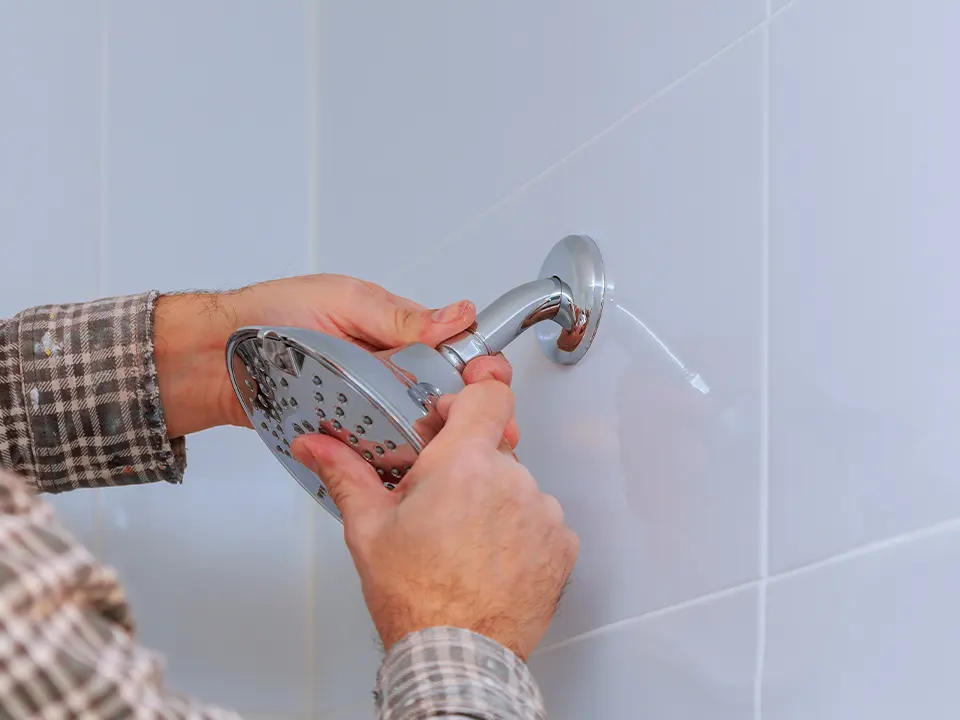
How to Replace a Showerhead: A Step-by-Step Guide for Homeowners
January 10, 2025
The Best Methods to Remove Hard Water Stains from Your Faucets and Fixtures
February 11, 2025A slow draining sink can be annoying, especially when you’re trying to wash dishes in the kitchen sink or cleaning up the bathroom sink. The good news is, most of the time, it’s a simple fix you can handle without calling a plumber. Here are some straightforward ways to unclog your sink and get it draining properly again.
1. Clear Out Debris with a Drain Zip Tool
One of the easiest and most effective ways to unclog a slow draining sink is by removing debris, especially hair, which is a common culprit. A drain zip tool is a simple, inexpensive tool that works wonders for this job.
How to do it:
- Insert the drain zip tool into the drain.
- Twist and pull it out. The tool will grab any hair, soap scum, or other gunk stuck in the drain.
- Rinse the drain with hot water to clear out any leftover debris.
This method works great for sinks that are clogged with soft debris like hair or soap buildup.
2. Clean the Stopper
If your sink has a stopper, it can collect soap scum, hair, and other small bits of debris over time. A clogged stopper can prevent water from draining properly, so it’s worth giving it a quick clean.
How to do it:
- Remove the stopper from the sink (you may need to unscrew it depending on your sink type).
- Clean it thoroughly with warm water and soap. A small brush can help scrub away any buildup.
- Once it’s clean, reinstall the stopper and check if your sink drains more efficiently.
Cleaning the stopper is a quick and simple task that could make all the difference.
3. Clean the Sink Overflow
Sinks with an overflow hole can sometimes get clogged, too. The overflow is designed to prevent water from spilling over the edge, but if it gets blocked, it can make your sink drain slowly. Regularly cleaning this area is a good habit.
How to do it:
- Use a small brush or a pipe cleaner to clear out any debris in the overflow hole.
- Run water through the sink to see if the water drains more quickly.
If the overflow is the issue, a quick cleaning will usually fix the problem.
4. Use Homemade Drain Cleaner
If your sink is still draining slowly, it might be time to give a homemade drain cleaner a try. Baking soda and vinegar combine well together to break down minor clogs, and the best part is they’re both natural and easy to find.
How to do it:
- Pour 1/2 cup of baking soda into the drain.
- Follow it up with 1/2 cup of vinegar. You’ll hear it fizz and bubble—this reaction helps break down grease and grime.
- Let it sit for about 10-15 minutes.
- Flush the drain with hot water to rinse away any leftover debris.
This method is great for preventing future clogs too, so you might want to do it once a month as part of your routine maintenance.
5. Use a Plunger
A plunger isn’t just for toilets; it can also work wonders for a slow draining sink. If the clog is deeper in the drain, the pressure from a plunger can help break it up.
How to do it:
- Place the sink plunger over the drain, ensuring a tight seal.
- Pump the plunger up and down several times. This creates pressure that can push the clog free.
- Check the sink after a few attempts to see if the water drains properly.
This method is great for stubborn clogs that don’t respond to simpler fixes.

6. Use a Snake
If the plunger doesn’t do the trick, a drain snake is another tool that can help clear out stubborn blockages. A snake is a flexible, long tool that reaches deep into the pipes and breaks through clogs.
How to do it:
- Place the snake into the drain, turning it as you push it down the pipe.
- Once you hit resistance, keep rotating the snake to break through the clog.
- Pull the snake out and rinse the drain with water to ensure everything is cleared out.
A drain snake is perfect for when the blockage is deeper in the pipes and not something a plunger can handle.
7. Clean the P-Trap
If your sink still isn’t draining properly, the problem might be in the P-trap, which is the U-shaped pipe under your sink. Over time, debris can build up in the trap, causing a blockage.
How to do it:
- Place a bucket beneath the P-trap to catch any water that spills out.
- Use a wrench to remove the P-trap.
- Clean out any debris inside the trap. You can use a small brush or even your hands (wear gloves) to clear it out.
- Reinstall the P-trap and check if the water drains more quickly.
Cleaning the P-trap isn’t too difficult, but it might be messy, so make sure you have a bucket to catch any water.
8. When to Call a Professional
Sometimes, even after trying all of the above methods, your sink may still drain slowly. If that happens, it could mean the problem is more serious and requires professional help. Here are a few signs it’s time to call a plumber:
- The clog persists despite all DIY methods.
- There’s a persistent, foul odour coming from the drain.
- You notice water backing up in other parts of the house.
- You suspect there’s a deeper issue, like a broken pipe or major blockage.
Don’t hesitate to call a plumber if the problem seems beyond your control. Ignoring the problem could lead to bigger problems down the road, and a professional will have the tools and expertise to fix it quickly.
Getting Your Sink Back on Track
A slow draining sink doesn’t have to be a major hassle. Most of the time, a simple cleaning or a few DIY fixes can get your sink draining like new again. Start with the easiest solutions, like clearing out debris and cleaning the stopper, and work your way up to more involved methods if needed. If all else fails, it might be time to call a professional to handle the problem. By staying on top of maintenance and fixing clogs early, you can keep your sink in top condition and avoid bigger plumbing issues later on.
If DIY fixes haven’t worked, it might be time for expert help. Contact us today to get your sink draining smoothly again!




